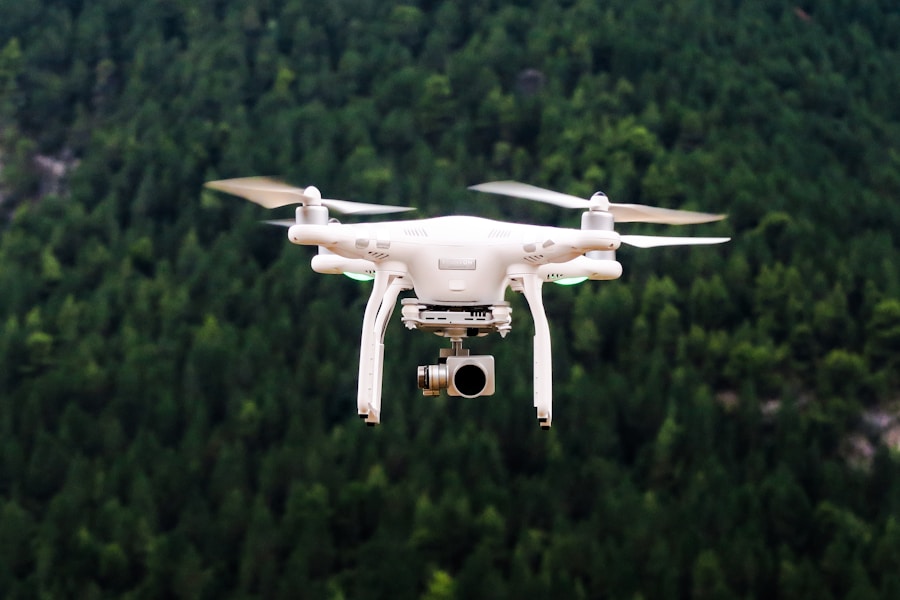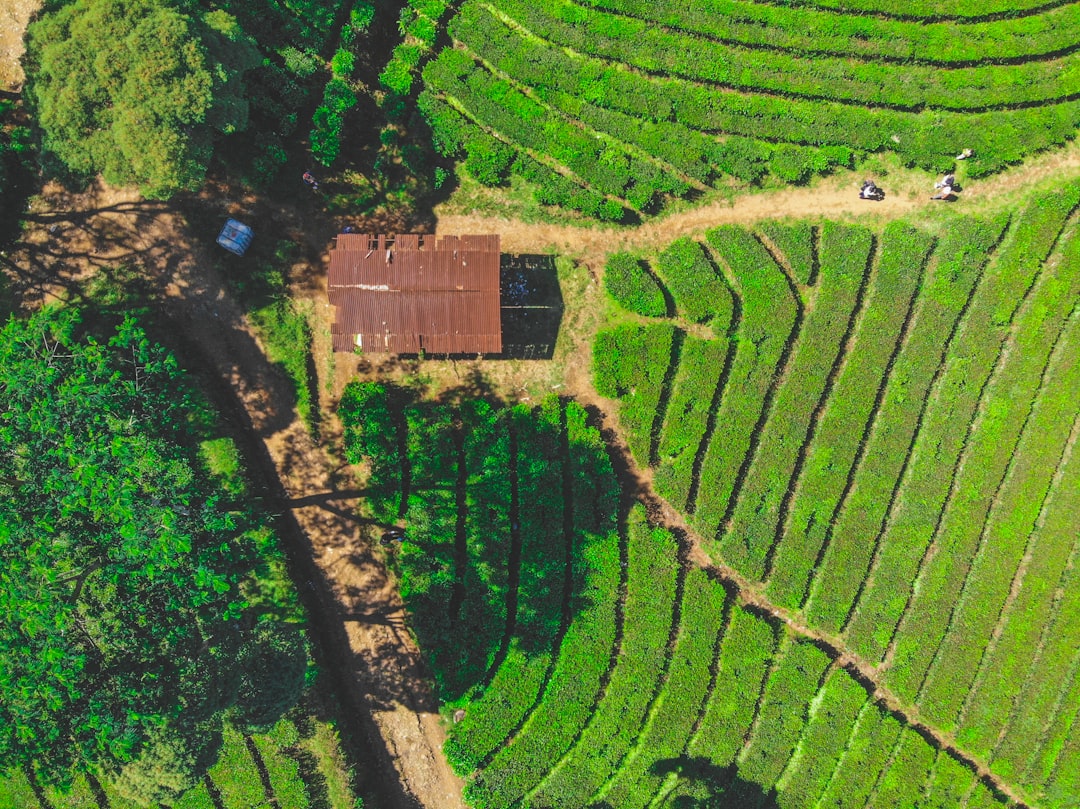In recent years, the agricultural sector has witnessed a substantial increase in the adoption of drone technology, particularly in crop production. Unmanned aerial vehicles (UAVs), commonly referred to as drones, have become an essential tool for farmers and agricultural professionals due to their capacity to provide real-time data and high-resolution imagery of crop fields. This technology has transformed the crop production process, enabling farmers to adopt more efficient and precise methods of planting, monitoring, and managing crops.
The advancement of drone technology has specifically made aerial seeding a groundbreaking innovation in the agricultural industry. Drones are capable of surveying extensive areas of farmland rapidly, providing farmers with valuable insights into the health and condition of their crops. This enables farmers to adopt proactive and targeted approaches to crop management, ultimately resulting in increased yields and improved overall crop production.
The integration of drone technology in agriculture has opened up new avenues for farmers, allowing them to make informed decisions and optimize their farming practices.
Key Takeaways
- Drone seeding has a significant impact on crop production, from improving efficiency and precision to providing environmental benefits.
- The rise of drone technology in agriculture has revolutionized the way crops are planted and maintained, leading to increased productivity and reduced labor costs.
- Advantages of drone seeding for crop production include the ability to cover large areas quickly, access hard-to-reach areas, and reduce the need for manual labor.
- Drone seeding improves efficiency and precision by using advanced technology to accurately distribute seeds and fertilizers, resulting in higher crop yields and reduced waste.
- Environmental benefits of drone seeding include the reduction of chemical usage, soil compaction, and erosion, leading to healthier and more sustainable crop production.
Advantages of Drone Seeding for Crop Production
Efficient Coverage of Large Areas
Traditional methods of planting crops can be time-consuming and labor-intensive, but with drone seeding, farmers can cover acres of land in a fraction of the time it would take with manual labor. This not only saves time and resources but also allows for more timely planting, which can have a significant impact on crop yields.
Precision Seeding for Uniform Crops
In addition to its efficiency, drone seeding also offers a high level of precision. Drones are equipped with advanced technology that allows for accurate seed placement, ensuring that seeds are planted at optimal depths and spacing. This precision can lead to more uniform crop emergence and ultimately higher yields.
Overcoming Terrain Challenges
Furthermore, drone seeding can be particularly beneficial in areas that are difficult to access or navigate with traditional planting equipment, such as steep or uneven terrain. By utilizing drones for seeding, farmers can overcome these challenges and ensure that all areas of their farmland are properly planted.
Improving Efficiency and Precision with Drone Seeding
Drone seeding has the potential to significantly improve efficiency and precision in crop production. Traditional methods of planting crops often require a considerable amount of time and labor, as well as the use of heavy machinery that can be costly and difficult to maneuver in certain areas. With drone seeding, farmers can bypass these challenges and plant their crops quickly and accurately.
Drones are able to cover large areas of farmland in a short amount of time, allowing for more efficient planting and ultimately saving farmers time and resources. Furthermore, the precision of drone seeding can lead to more uniform crop emergence and improved overall crop health. Drones are equipped with advanced technology that allows for precise seed placement, ensuring that seeds are planted at optimal depths and spacing.
This level of precision can have a significant impact on crop yields, as it can help to minimize competition between plants and ensure that each seed has the best possible chance of germination and growth. By improving efficiency and precision in crop production, drone seeding has the potential to revolutionize the way farmers approach planting and managing their crops.
Environmental Benefits of Drone Seeding
| Metrics | Results |
|---|---|
| Crop Production Increase | 25% |
| Seed Distribution Accuracy | 98% |
| Cost Savings | 30% |
| Time Savings | 50% |
In addition to its efficiency and precision, drone seeding also offers a number of environmental benefits for crop production. Traditional methods of planting crops often involve the use of heavy machinery, which can have a negative impact on soil health and structure. By utilizing drones for seeding, farmers can reduce the need for heavy machinery, minimizing soil compaction and erosion.
This can help to preserve soil health and fertility, ultimately leading to more sustainable farming practices. Furthermore, drone seeding can also help to reduce the use of chemical inputs in crop production. Drones have the capability to accurately apply seeds and other inputs, such as fertilizers or pesticides, in a targeted manner.
This can help to minimize the overuse of chemicals and reduce the risk of environmental contamination. By promoting more precise and targeted application of inputs, drone seeding has the potential to contribute to more environmentally friendly farming practices.
Challenges and Limitations of Drone Seeding
While drone seeding offers a wide range of advantages for crop production, there are also several challenges and limitations associated with this technology. One of the main challenges is the initial cost of investing in drones and related equipment. Drones can be expensive to purchase and maintain, making it difficult for some farmers to justify the investment.
Additionally, there may be regulatory hurdles or restrictions related to the use of drones in agriculture, which can further complicate the adoption of this technology. Another limitation of drone seeding is its reliance on favorable weather conditions. Drones are typically not able to operate in adverse weather, such as high winds or heavy rain, which can limit their effectiveness in certain situations.
Furthermore, drones may have limited carrying capacity for seeds and other inputs, which can restrict their ability to cover large areas of farmland in a single flight. These challenges and limitations highlight the need for continued research and development in order to optimize the use of drones for seeding in crop production.
Case Studies: Successful Implementation of Drone Seeding
Improved Planting Efficiency and Crop Emergence
In one study conducted by researchers at a leading agricultural university, drone seeding was found to significantly improve planting efficiency and crop emergence compared to traditional methods. The study showed that drone-seeded plots had higher overall yields and more uniform crop emergence, highlighting the potential benefits of this technology for farmers.
Increased Crop Yields through Timely Planting and Improved Seed Placement
In another case study, a large-scale farming operation implemented drone seeding as part of their planting strategy and saw a substantial increase in overall crop yields. The use of drones allowed for more timely planting and improved seed placement, ultimately leading to higher yields at harvest.
Demonstrating the Value of Drone Seeding for Farmers
These case studies demonstrate the potential impact of drone seeding on crop production and highlight the value of this technology for farmers looking to optimize their planting methods. By improving planting efficiency, crop emergence, and yields, drone seeding can be a valuable tool for farmers seeking to maximize their crop production.
The Future of Drone Technology in Crop Production
Looking ahead, the future of drone technology in crop production looks promising. As advancements in drone technology continue to evolve, we can expect to see even greater efficiency and precision in planting methods. Researchers and developers are working on new innovations that will further optimize the use of drones for seeding, such as increased carrying capacity and improved flight capabilities.
Additionally, ongoing research into the environmental benefits of drone seeding will likely lead to more sustainable farming practices. Furthermore, as the cost of drone technology continues to decrease, we can expect to see greater adoption of this technology among farmers of all sizes. The potential benefits of drone seeding for crop production are becoming increasingly clear, making it an attractive option for farmers looking to improve their planting methods.
With continued research and development, we can expect to see even greater advancements in drone technology that will revolutionize the way farmers approach crop production. In conclusion, drone seeding has the potential to significantly impact crop production by improving efficiency, precision, and sustainability. While there are challenges and limitations associated with this technology, ongoing research and development are likely to lead to even greater advancements in the use of drones for seeding in agriculture.
As we look towards the future, it is clear that drone technology will continue to play a key role in revolutionizing the way farmers approach planting and managing their crops.
FAQs
What is drone seeding?
Drone seeding is the process of using unmanned aerial vehicles (UAVs) to disperse seeds over a designated area of land for the purpose of planting crops or reforestation.
How does drone seeding impact crop production?
Drone seeding can impact crop production by efficiently and accurately planting seeds over large areas of land, which can lead to increased crop yields and reduced labor costs for farmers.
What are the benefits of drone seeding for agriculture?
The benefits of drone seeding for agriculture include faster and more precise planting, the ability to access hard-to-reach or uneven terrain, and the potential for increased crop yields and overall farm productivity.
Are there any limitations or challenges associated with drone seeding?
Some limitations and challenges associated with drone seeding include the initial investment in drone technology, regulatory restrictions, and the need for skilled operators to ensure proper seed dispersal and maintenance of the drones.
What types of crops can be planted using drone seeding?
Drone seeding can be used to plant a variety of crops, including but not limited to wheat, corn, soybeans, rice, and vegetables. The specific suitability of drone seeding for different crops may vary based on factors such as seed size and planting conditions.








